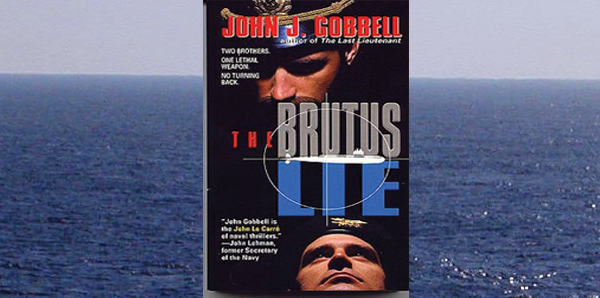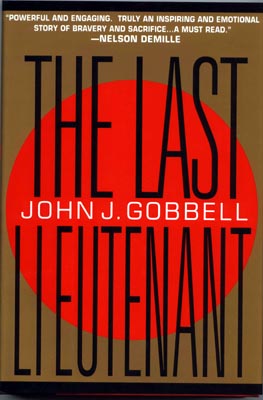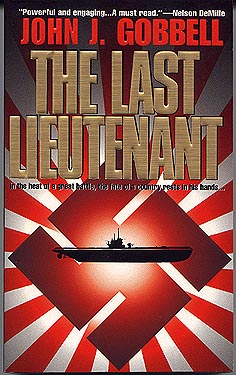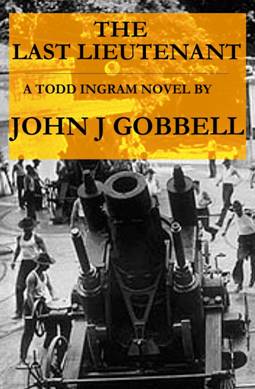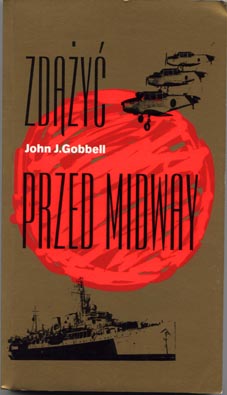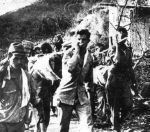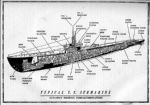THE LAST LIEUTENANT
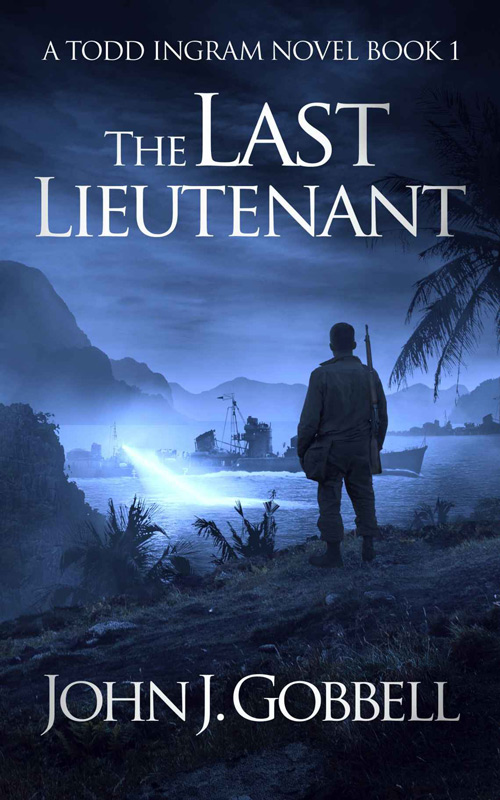 The Last Lieutenant
The Last Lieutenant
Todd Ingram Adventures, Book 1
Kindle:
ASIN: B0038M3D8I
Starboardside Production
Trade Paperback
United States: $14.95
Great Britain: (GBP) £11.50
Europe: €12.95
Kindle: $8.95
OUTNUMBERED
Under an unstoppable barrage of artillery, brilliant U.S. cryptographers crack the Japanese top-secret code, revealing their chilling plans for a doomsday attack on Midway Island.
OUTGUNNED
The Navy's high command responds quickly, mobilizing all they have to counter-attack the massive Japanese firepower. But there is a mole among the code-cracking team-a ruthless, cold-blooded Nazi spy on orders to stop at nothing in aiding the Japanese.
BUT NOT OUTSMARTED
Enter Navy Lieutenant Todd Ingram—the man the mole didn't count on. As the Japanese ravage the South Pacific, Ingram must escape the onslaught-and stop a traitor who has the power to turn the tide of war toward the land of the rising sun.
In the heart-pounding tradition of Eye of the Needle comes a thriller full of raw courage, non-stop action, and an unforgettable villain.
To coincide with the 50th anniversary of VJ Day, Gobbell offers an unforgettable World War II thriller. May 1942: On Corregidor Island, the last American outpost in the South Pacific, Navy Lt. Todd Ingram refuses to give up the fight when General Jonathan Wainwright surrenders Corregidor to the Japanese. Read more»
Buy the Book:



SYNOPSIS
The Japanese siege of Bataan and Corregidor during World War II was one of the worst defeats in U.S. military history. Over 130,000 GIs and Filipinos were slaughtered on this oft-forgotten Pacific front. And if it were not for naval intelligence's success in breaking the JN-25, the Japanese Navy code, Midway Island would have fallen as well, leaving Hawaii and perhaps even the West Coast of the United States for the taking.
THE LAST LIEUTENANT, an unforgettable World War II thriller on part EYE OF THE NEEDLE and one part FROM HERE TO ETERNITY, captures the heart and soul of those who fought to stop worldwide fascism. With the eye for detail of a military historian and the writing skills that have brought comparison to John Le Carré and James Jones, John J. Gobbell takes his place among today’s finest historical thriller writers.
THE LAST LIEUTENANT is Todd Ingram. Half-starved and beyond exhaustion, Ingram refuses to give up the fight when General Jonathan Wainwright surrenders Corregidor to the Japanese. As artillery blasts The Rock’s beaches and hillsides, Ingram commandeers a thirty-six foot launch with eleven other desperate men. But only Ingram knows the most dangerous threat of all: that a Nazi spy named Walter Radtke lies undiscovered aboard the submarine U.S.S. Wolfish, the last evacuation submarine off the island. The Nazi knows about Chester Nimitz’s plan to trap the Japanese fleet at Midway and needs just thirty seconds and a radio to get a warning dispatch to Yamamoto. Ingram must track down the spy through miles of Japanese-infested waters and stop him before the tide of the war turns irrevocably to the rising sun. Before Ingram can save himself, Helen Duran, the Army nurse he loves, and his men, he must save his country.
Radtke knows that the U.S. navy has cracked the Japanese code and that Commander in Chief Chester Nimitz is planning a trap for the Japanese fleet at Midway. All Radtke needs is a radio and thirty seconds.
The Degüello
 This arrangement for the Degüello is by Nelson Riddle and his orchestra.
This arrangement for the Degüello is by Nelson Riddle and his orchestra.
Please read prologue below for details.
Excerpt
Prologue (Extended Version or Mobile Version)
16 June, 1941
Union Station
El Paso, Texas
Kapitänleutnant Helmut Döttmer was a killer. Trained by the Nazi Abwehr, It made no difference how his victims wiggled or cried out or squirmed. He was always ready to finish the job… where others had failed and then were themselves killed. And now, Döttmer is at it again, killing Walter Radtke, Radio Technician Second Class, USN. Döttmer intends to assume Radtke's identity and, with fresh orders, join the cryptographic unit in the U.S. Naval Radio Intercept Tunnel, Lateral Four, on Corregidor, a three-mile long island at the mouth of Manila Bay in the Philippines.
But as Döttmer yanks his garrote tighter and tighter, a haunting refrain filters through the high windows of the filthy men’s room in the El Paso Train Station. It’s a mournful trumpet solo drifting in and out. He’d heard it the night before in Preston’s Cantina. That short little Mexican had an amazing lip. And each time he played the tune, his heart and soul went with it. No one dared speak while the fat little peon played that tune in Preston’s. It was as if the melody existed only for itself; that all should stand and bow in reverence to the trumpeter. Döttmer, an accomplished trumpeter himself, couldn’t get it out of his mind. Later, he learns the melody is called the Degüello, coming from a Spanish noun meaning to cut one’s throat. More figuratively, it means “…give no quarter,’ or “…no prisoners.” The tune was played in 1836 as General Santa Ana and his army of 2,000 men attacked the Alamo in Texas defended by only 300 Texans. Few Texans survived, but the Alamo became a rallying cry for Texans and their fight for independence from Mexico.
Now, Döttmer heads for Corregidor just before war breaks out in the Pacific. Soon, the Japanese surround the tiny island and bomb it into submission. Döttmer cannot help but think of his victim in El Paso and the Degüello, as Japanese artillery pounds the “Rock” round-the-clock every two minutes.
Döttmer serenades his “fellow Americans” in Chapter 17 in an act of defiance with his own beautiful rendition of theDegüello just before he boards the last submarine out of Corregidor.
No prisoners… Download PDF» Mobile Version»
Critical Praise / Cover Quotes
"Powerful and engaging. Truly an inspiring and emotional story of bravery and sacrifice. A MUST READ."
"There are no greater tales of epic combat than the fight for Corregidor and the battle of Midway. John J. Gobbell masterfully combines them into a gripping war story that will be considered a classic in the decades to come."
"Epic adventure in the grand tradition. A rip-snorting barnburner by a first-rate storyteller."
"Combining thriller with war novel, THE LAST LIEUTENANT calls up memories of THE NAKED AND THE DEAD and James Jones. A first-rate accomplishment. Wonderful."
"THE LAST LIEUTENANT us the best kind of war storyBone man tracks another through the smoke of a great battle, with the fate of the world hanging in the balance. Gobbell kept me awake until the final shot struck home."
Reviews
- Publishers Weekly (29 May 1995)
- Chicago Tribune (30 August 1995)
- Booklist (1 August 1995)
- San Francisco Examiner (15 August 1995)
- Orlando Sentinel(19 November 1995)
- Columbia (July 1995)
- New York Times Book Review (27 August 1995)
- The Washington Post (31 August 1995)
- The Los Angeles Times (1995)
- Army Times (Summer 1995)
- Publishers Weekly
Gobbell (The Brutus Lie), a former Navy lieutenant who served in the South China Sea in the1960s, has fashioned a complex WW II thriller about events surrounding the American defeat at Corregidor and the subsequent victory at Midway, which turned the tied of the war against the Japanese. The tale is loosely based on South From Corregidor, Lt Commander John H. Morrill II’s 1943 factual account of his escape fro the ill-fated island the night it fell to the Japanese. In June 1941, after murdering a U.S. Navy bugler named Walter A. Radtke in El Paso, a Nazi spy assumes the dead man’s identity and winds up, nearly a year later, as an American cryptologist on the war-ravaged island of Corregidor. Because they hold crucial information about the American plan to defeat the Japanese at Midway Island, Radtke and his American superior, Lt. Epperson, are ordered to evacuate. Lt Todd Ingram, skipper of the U.S.S. Pelican, which has been assigned to effect their rendezvous with a submarine, comes upon a mortally wounded Epperson and learns Radtke has disappeared. As the Japanese overrun the island, Ingram takes 17 survivors on a desperate dash for freedom in a battered 36-foot launch. A subplot about war-thwarted musical careers and a miraculous reunion between Ingram and an Army nurse brutalized by a bestial American-educated Japanese officer provides plenty of thrills and a poignant romantic twist. Gobbell’s thickly inhabited page-turner successfully melds elements of espionage, classic combat heroism and carefully reconstructed historical fiction. Maps not seen by PW.
WORLD WAR II THRILLER IS EXPERTLY CRAFTED
The 50th anniversary of V-J day provided a fitting publication date for this wartime espionage thriller set in the last days before the fall of Corregidor. This exciting book is a tribute to the men and women who fought gallantly against such overwhelming odds in the war in the Pacific.
Even after Gen. Douglas MacArthur has left for Australia and after the fall of Manila and Bataan, Corregidor continues to hold out, suffering constant bombardment and high casualties. Offshore, American naval Lt. Todd Ingram patrols the waters and eventually is ordered to ferry two cryptographers to a submarine that will take them to MacArthur. One of the cryptographers has cracked the Japanese code and has pinpointed both the date Japanese will attack Midway the size of the Japanese fleet. Adm. Chester Nimitz believes he can set a trap at Midway and strike a [decisive] blow against the Japanese.
The sub is delayed and this cryptographer—Ingram’s fellow Naval Academy grad, Lt D.J. Epperson—is murdered. Before Epperson dies, he tells Ingram that cryptographer Walter Radtke is a spy, probably a Nazi. As Ingram holds his dying friend’s hand, the MPs walk in and accuse him of murder. But in the confusion, Ingram is ordered to take a group to the sub, including Radtke.
Ingram manages to prevent Radtke’s escape on the sub, only to have an officer later let the spy slip away. While Corregidor is surrendering, Ingram’s crew break him out of the brig and together, they escape in a launch and begin the hunt for the spy who, if he gets to a radio, can let the Japanese know of Nimitz plans.
It’s a game of cat and mouse across the Philippine archipelago as Ingram and his crew fight to complete an enormously difficult mission. It’s also a compelling story of people of immense courage. Gobbell dedicates The Last Lieutenant—To the men and women of the Allied forces of World War II—those who returned and those who didn’t. It’s also a tribute to the people of the Philippines.
Gobbell takes an actual incident–the voyage that a handful of U.S. navy survivors of the fall of Corregidor made from the Philippines to Australia in 1942–and turns it into a consistently absorbing historical thriller. Lt. Todd Ingram and his distinctly motley crew must simultaneously survive, rescue friends in danger, and guard the vital secret of the U.S. Navy’s code-breaking efforts, which a German spy threatens to reveal to the Japanese. The action is continuous, the characterization well above average (even sparked by touches of wit), and the sense of place and time strong.
Noteworthy, too are Gobbell’s implicit tribute to the role of the Filipinos in resisting the Japanese and helping Americans escape and the stark realism of his treatment of the fall of Corregidor.
CAT AND MOUSE – AND MURDER:
World War II spy thriller a tribute to Allied Troops
The 50th anniversary of V-J day is a fitting publication date for this wartime espionage thriller set in the last days before the fall of Corregidor. This exciting book is a tribute to the men and women who fought gallantly against such overwhelming odds in the war in the Pacific.
Even after Gen. Douglas MacArthur has left for Australia and after the fall of Manila and Bataan, Corregidor continues to hold out, suffering constant bombardment and high casualties. Offshore, American naval Lt. Todd Ingram patrols the waters and eventually is ordered to ferry two cryptographers to a submarine that will take them to MacArthur. One of the cryptographers has cracked the Japanese code and has pinpointed both the date Japanese will attack Midway the size of the Japanese fleet. Adm. Chester Nimitz believes he can set a trap at Midway and strike a [decisive] blow against the Japanese.
The sub is delayed and this cryptographer—Ingram’s fellow Naval Academy grad, Lt D.J. Epperson—is murdered. Before Epperson dies, he tells Ingram that cryptographer Walter Radtke is a spy, probably a Nazi. As Ingram holds his dying friend’s hand, the MPs walk in and accuse him of murder. But in the confusion, Ingram is ordered to take a group to the sub, including Radtke.
Ingram manages to prevent Radtke’s escape on the sub, only to have an officer later let the spy slip away. While Corregidor is surrendering, Ingram’s crew break him out of the brig and together, they escape in a launch and begin the hunt for the spy who, if he gets to a radio, can let the Japanese know of Nimitz plans.
It’s a game of cat and mouse across the Philippine archipelago as Ingram and his crew fight to complete an enormously difficult mission. It’s also a compelling story of people of immense courage. Gobbell dedicates The Last Lieutenant—To the men and women of the Allied forces of World War II—those who returned and those who didn’t. It’s also a tribute to the people of the Philippines.
GREAT ESCAPE
Released in time to mark the 50th anniversary of Japan’s defeat in World War II, The Last Lieutenant by John J. Gobbell (St. Martin’s Press 360 pages) is that rare find these days—a war novel offering all the tensions and surprises of a well-planned thriller.
Set in 1942 as the Americans surrender the Philippines to the Japanese, owes much to the true-life escape of then Lt. Commander John H. Morrill II. With 16 men from his sunken minesweeper, he escaped Corregidor the night it was surrendered to the Japanese by sailing a makeshift vessel 1,900 miles to freedom through enemy-controlled waters.
The fictional last lieutenant is Todd Ingram who refuses to obey orders to give up the fight after the surrender. He commandeers a 36-foot launch and with a motley crew, plans to reach Australia.
But Ingram also has some unfinished business—before the surrender he had learned that a Nazi spy, posing as an American soldier, has obtained Admiral Nimitz’s plan to trap the Japanese fleet at Midway. The spy needs a radio and 30 seconds to get his warning message to the Japanese. Ingram needs to find the spy, who has managed to escape the island and been picked up with other survivors by an American submarine.
Gobbell, a former Navy lieutenant, does a masterful job at making even highly technical jargon about engines and weaponry seem comprehensible to the novice. He also has brought to life a memorable cast of characters including the rugged Ingram; nurse Helen Durand, who’s is trapped with American forces on Corregidor and captured by the Japanese” and German spy Helmut Doettmer.
It is an old tradition to base stories on great historic events. Shakespeare did it in plays on Julius Caesar, Anthony and Cleopatra, and the English Kinds: Henry, Richard and John. History sets the stage and the writer weaves real characters into the tale.
Author John Gobbell does it with The Last Lieutenant, a novel of the fall of the Philippines in 1942. It is scheduled to be published by St. Martin’s Press in a hardback edition on August 15, 1995, the 50th anniversary of V-J(Victory over Japan) Day, and the end of the Second World War. Like Shakespeare, Gobbell bases his tale on fact: Navy Lt Cmdr. John H. Morrill II’s heroic open-boat voyage through enemy-controlled waters from Corregidor Island in the Philippines to Australia. Morrill, now a retired rear admiral, wrote an account of his fantastic escape in South From Corregidor published in 1943 and long our of print.
Finding Morrill’s book some years ago, Gobbell, himself a sailor, got permission from Morrill to use the bare bones of history to spin his tale. He does a good job, too. He lets you smell the intrigue as well as the oil and sea spray in this gritty tale of espionage, heroics, fear, bravado and exhaustion. His hero is Lt. Todd Ingram Captain of the Pelican, a wooden hulled minesweeper.
The novel begins four months after the U.S. Pacific fleet suffered near destruction at Pearl Harbor. The Japanese control most of the Pacific. Bataan has fallen and Corregidor is about to go. When Ingram’s ship sinks, he escapes the enemy on a 36-foot boat used to ferry sailors and stores from shore to ship and back again. With him is a rag-tag group of soldiers, sailors and an Army nurse. His month-long secret voyage forms the backdrop of the story.
On the way, he gets involved with a major attempt by a German spy to pass American coded information to the enemy and looks at life in the tunnels of Corregidor as the Japanese big guns and planes reduce the island to rubble. He meets up with the valiant Philippines resistance fighters, helps in a doomed attempt to escape by air, and after a vain attempt to patch up a wounded crewman, buries him at sea. His long journey ends when an Australian army sergeant makes the seven survivors spread eagle on the sand, doubting they could have made it from Corregidor.
One critic said Ingram’s adventures form “the best kind of war story—one man track another through the smoke of a great battle with the fate of the world hanging in the balance.”
We keep two 20-volume encyclopedias at home. One is from 1980 and the other is from 1933. I usually check the 1980 books for accuracy but always dip into the 1933 edition for background. The further we get from events, the weaker the memory, the shorter the attention, the fewer the details. That’s why I enjoyed reading The Last Lieutenant and why I recommend you not only read it but give it to a young person to read as well.
In his message marking the end of World War II in Europe, Pope John Paul II speaks of the “young people who have no personal experience of the horrors of that war.” He reminds them that “the victims, the combatants, and the martyrs of the Second World War were for the most part, young people like you.”
Gobbell’s 1991 novel The Brutus Lie is schedule to be release in paperback at about the same time that The Last Lieutenant is released. He’s also at work on another novel about a set of twins who grow up separated from each other and then find themselves as wartime enemies. Gobbell’s work is not only great summertime reading, it’s also an opportunity of us to understand how those young men and women of 50 years ago felt. We can see their bravery and sacrifice and grow wise against the horrors of war.
Agents and publishers keep saying that the market for World War II fiction has vanished. Yet novels that describe the adventures and horrors of history’s biggest and bloodiest conflict continue to appear.
In the most successful cases, fiction is based closely upon fact. One recent entry was “Reich Angel” by Anita Mason, a virtual replication of the autobiography of Hanna Reitsch, Germany’s famous wartime test pilot. Similarly, John J. Gobbell’s The Last Lieutenant, his second novel, closely follows “South From Corregidor,” John H. Morrill’s nonfiction account of his breathtaking escape in 1942 fro the Japanese at Corregidor, the beleaguered U.S. fortress commanding Manila Bay in the Philippines.
In real life, Morrill’s minesweeper, the Quail, was sunk by Japanese fire; he escaped with 16 men in a small boat the night Corregidor surrendered, then made his way an incredible 1,900 miles through enemy-controlled waters to Australia. In Gobbell’s novel, the hero, Navy Lt. Todd Ingram, has his minesweeper, Pelican, shot out from under him and escapes with 12 men in a 36-foot launch, following the same route southward.
From that point, the novel expands to introduce Helmut Döettmer, a German spy who poses as the U.S. cryptographer he has murdered, and sadistic Lt. Kiyoshi Tuga of the Japanese Secret Police, who captures and tortures Lt. Helen Durand, an American nurse. Durand and Ingram exchange a chaste kiss in mid-story and hint at more to come if and when they escape to freedom. But the crux of the novel is Ingram’s frantic effort to find Döettmer and stop him from radioing his superiors that the Americans have broken the Japanese cable code and are planning to ambush the Japanese fleet on its way to Midway.
The stakes are very high. The Japanese have sunk out battleships in their sneak attack on pearl harbor; if they can take Midway and destroy our forces there, the United States will have little left with which to defend the West Coast. If, however, the small U.S. Navy force can surprise and sink or seriously damage the Rising Sun’s armada, the Japanese conquest of the pacific– which by now includes China, Manchuria, Singapore, Hong Kong, Taiwan, Korea, the Dutch East Indies, new Guinea, the Solomons, Marianas and the Philippines–will be halted.
The confrontation between Ingram and Döettmer occurs at Mindanao, the Philippines southernmost island. Ingram has come ashore to find a radio and provisions. Döettmer who had been aboard the last U.S. submarine to escape Corregidor, managed to get ashore after the sub was blown up. Döttmer identifies himself to Tuga, whose men rig a radio transmitter so the Nazi can warn the Japanese of the American ambush. Ingram and his crew intrude, engage in a firefight and are about to be overwhelmed when a Filipino guerrilla leader suggests a novel way to blow up the bad guys. I’ll leave it to the reader to discover how—suffice it to say that the means will draw howls of protest from animal rights organizations.
Gobbell, who was a weapons officer on a destroyer in the Pacific in the 1960s, does a fine job of re-creating the horror of Corregidor in 1942. There, 15,000 Americans held out in the fortress’s concrete tunnels for an agonizing five months while the Japanese pounded them with 16,000 shells a day. The Americans surrendered only when they ran out of food and water, knowing that the Japanese did not abide by the Geneve Convention’s rules for the treatment of prisoners. In fact, 28,000 U.S. and Filipino soldiers captured on Corregidor and nearby Bataan died within tow months from bayonet wounds, beatings of starvation. At war’s end, Gen. Homma, the Japanese commander in the Philippines, was convicted of war crimes and executed.
Though the writing is sometimes awkward—there is too much macho banter among the men early on, and nicknames like “Bucket-mouth,” “Hambone,” “Foggy.” and “L’il Adolf” become irritating—The Last Lieutenant is a good thriller. It is also an instructive one that hews closely to history and should be read by young people who may believe that we were beastly to the Japanese in World War II.
SPIES & THRILLERS
The Last Lieutenant, by John J. Gobbell (St. Martin’s Press) is another novel by a military man, this one a former weapons officer on a destroyer. Just as No Place to Hide is about the evacuation of Saigon, so The Last Lieutenant is about the evacuation of Corregidor during the early days of Word War II.
After the surrender of Corregidor to the Japanese, Lieut. Todd Ingram, the skipper of a minesweeper, gathers together a group of men and tries to flee to Australia in a PT boat. Other characters include a stock Nazi type who has infiltrated the code room of an American ship. Almost everything we encounter is what one might expect” the Japanese fleet, submarine warfare, a very important message that must be sent to American headquarters. Nonetheless, The Last Lieutenant makes for interesting reading.
John J. Gobbell commemorated the 50th anniversary of V-J day with this tale of espionage and war. Gobbell broadly portrays two battles in the Pacific: Corregidor Island in 1942 and Midway the following [month]. He focuses on Lt. Todd Ingram and a Nazi spy who has assumed the identity of an American cryptographer, Walter Radtke. Gobbell focuses on Ingram’s escape from Corregidor before the takeover. The tale begins with the murder of a Navy bugler, Walter A. Radtke, and the spy who takes on his identity. Deception heightens as the spy disguise himself as an American cryptologist on the island. He later disappears, leaving Lt. Ingram and the remaining survivors of the battle to get off the island before the Japanese gain control. A reunion between Ingram and an Army nurse provides a romantic element.
O.C. AUTHOR DUSTS OFF EPIC TALE: 1943 BOOK IS BASIS FOR GOBBELL THRILLER
The seed for John J. Gobbell’s World War II thriller The Last Lieutenant was planted nearly 25 years ago in an unlikely place: a Century City high-rise where he worked as director of administration for an investment company.
Gobbell was standing outside the president’s office one day waiting for a meeting when he began perusing the bookshelves in the outer hallway. You know, the kind of books: those used strictly for decorative purposes.
“They bought books by the pound from the UCLA bookstore—old statistics books, a 1929 accounting book, things you’d never want to pick up,” Gobbell recalled.
But one title caught his eye. “South From Corregidor,” Lt. Cmdr. John H. Morrill II’s 1943 factual account of his escape from Corregidor, the small fortified island at the mouth of Manila Bay, which suffered four months of continuous bombardment before falling to the Japanese on May 6, 1942. Hiding out in coves during the day and sailing under the cover of darkness to avoid capture, Morrill and 17 half-starved fellow officers and men from his sunken minesweeper traveled down the entire Philippine archipelago to Darwin, Australia: a 1,900 mile voyage in 28 days.
Gobbell, himself a former Navy lieutenant in the early ‘60s and a longtime World War II buff, blew the dust off the book and asked the president’s secretary if she minded if he read it. “Go ahead, take it,” she said.
Gobbell not only took the book and read it, but he kept it, showing to to friends and rereading it several times over the next two decades.
By 1992, the Newport Beach author’s first novel—a techno-thriller called The Brutus Lie—had been published and he had undergone several failed attempts at writing a sequel. Then he remembered Morrill’s book.
The result is The Last Lieutenant (St. Martins’ Press) just published to coincide with the 50th anniversary of V-J Day.
Using Morrill’s wartime exploits as the basis, Gobbell traces the events leading up to and following the American defeat at Corregidor–the last U.S. outpost in the western Pacific–to the U.S. victory a Midway a month later, which turned the tide of the war against Japan.
Where Gobbell’s book veers form historical reality is that his Morrill-modeled main character, Navy Lt. Todd Ingram, must not only save himself and his men, but also catch a Nazi mole cryptographer who plans to tip off the Japanese that U.S. navy intelligence experts have cracked the Japanese code and that Americans are planning a trap for the Japanese fleet at Midway.
Publishers Weekly calls the novel a “thickly inhabited page-turner” that “successfully melds elements of espionage, classic combat heroism and carefully reconstructed historical fiction.”
Gobbell, an executive recruiter, says that before writing the book, he wanted to learn more about John Morrill. Through the U.S. Naval Academy, he tracked down the navy veteran, now 93 and living in Bland, Va. They spoke over the phone.
“The more I talked to him, the more I felt a responsibility to write a novel base on his exploits,” says Gobbell, 57. “His fighting spirit just astounded me. Time and time again, I’d say, ‘I really admire what you did for us.’ And guess what he would say? ‘We weren’t heroes. We only did what we had to do.’”
Gobbell says 130,000 American and Filipino soldiers and sailors were lost during the fall of the Philippines. “It was the worst military defeat in U.S. history,” he says. At the time, “Churchill and Roosevelt had to sacrifice Asia because they just didn’t have enough men and material to fight a two-ocean war.”
Gobbell says 95% of his novel is historical fact, “but in fiction, you have to have something to make the reader turn pages.”
“If I merely documented Morrill’s voyage, it would not have been interesting to a reader, so we had to introduce a sinister element in the form of a mole. And the fact that the fall of Corregidor and the battle of Midway were so close [in time], if you could put anything about the American victory at Midway at risk that would, I think, make a compelling work.”
Gobbell who is launching a 17-city book signing tour form San Diego to San Francisco to Las Vegas, is working on his third novel—a contemporary thriller involving a U.S. Navy submarine and biological warfare.
He is, he says, a long time fan of thrillers. “I pick those up before I pick up some of the things your literature teacher would recommend,” he says. “My first editor really captured the essence of what a thriller is. She said a thriller is a “desperate quest.”
But a good thriller involves more than that, he says. “I think with a thriller, it’s not just [a matter of] writing pulp fiction. You have a debt to your readers to provide something they can retain and profit by. In this case, it’s history and [information showing] what a marvelous area the Philippines are. If you don’t [give the reader something more], I don’t think you’re doing your job.”
Book Covers
Gallery

Topside' on Corregidor. Peacetime parade ground on this three mile long island. The Army barracks in the background were known as Mile-long barracks."
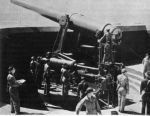
One of the fourteen inch World War I style cannons -- range, 27,000 yards -- found on the fortified islands of Manila Bay. The advantage was that the cannon disappeared or lowered itself below ground level after firing; thus was out of sight. The advent of aircraft nullified this concept in World War II, rendering Corregidor's fortifications useless.
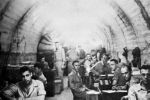
Corregidor's Malinta Tunnel during the April-May siege of 1942. Normally set up to garrison 5,000 artillerymen, Corregidor became a desperate refuge after the fall of the Bataan Peninsula. By the time Corregidor fell, its population had swelled to over 11,000. The men crowded in this photo were on 1/2 rations.

Lieutenant Commander John H. Morrill, II, a day after his arrival in Darwin, Australia with seventeen of his crew off the minesweeper USS Quail. Morrill, who retired as a rear admiral stands in the pith helmet just to the left of their hand-made flag. The distance from Manila Bay to Darwin was over 1,900 miles and took twenty-nine days.

Admiral Karl Doenitz, Germany's Chief Flag Officer of U-boats with the title of Befehshaber der U-boote (BdU)
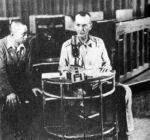
Major General Jonathan M. (Skinny) Wainwright at the microphone of radio station KZRH in Manila, ordering that US and Filipino troops in all the Philippine Islands lay down their arms and surrender to the nearest Japanese garrison. Note the Japanese interpreter listening to Wainwright's right.

Mortar pitts of Battery Geary. These 12 inch M-1908 mortars could hurl a 670 pound projectile 15,200 yards (over 7 1/2 miles) and had a lethal radius of 500 yards.





